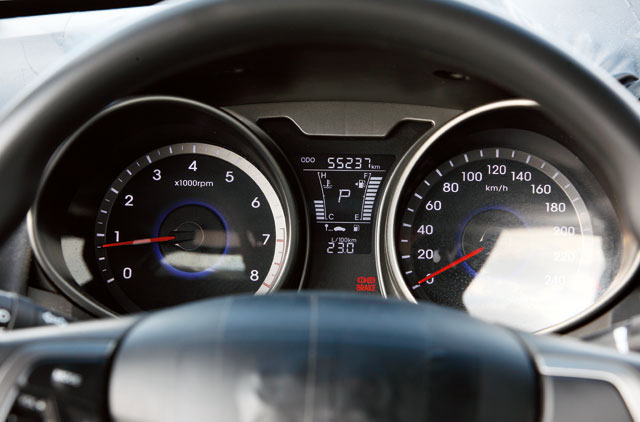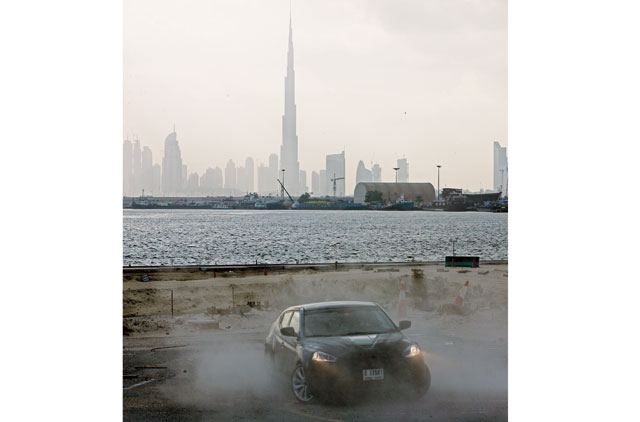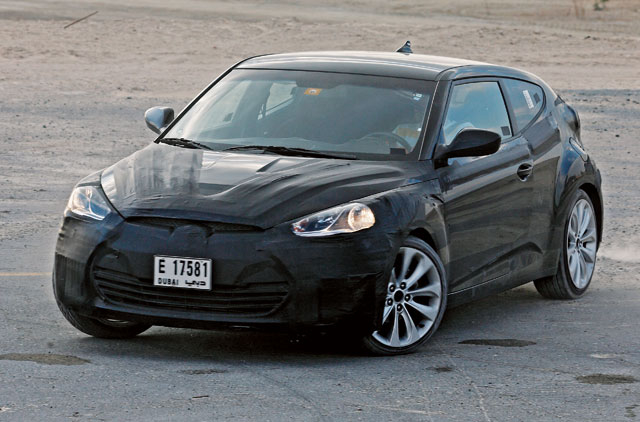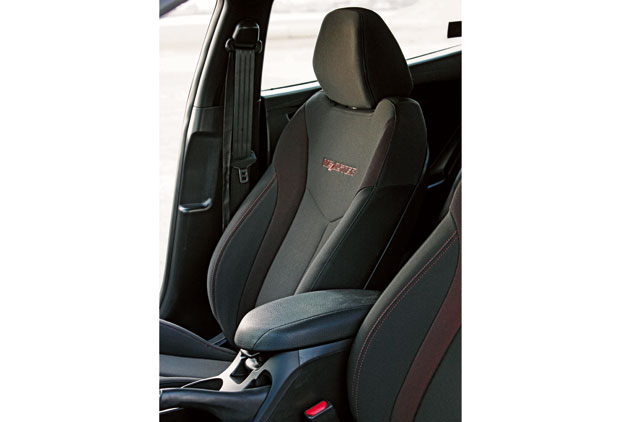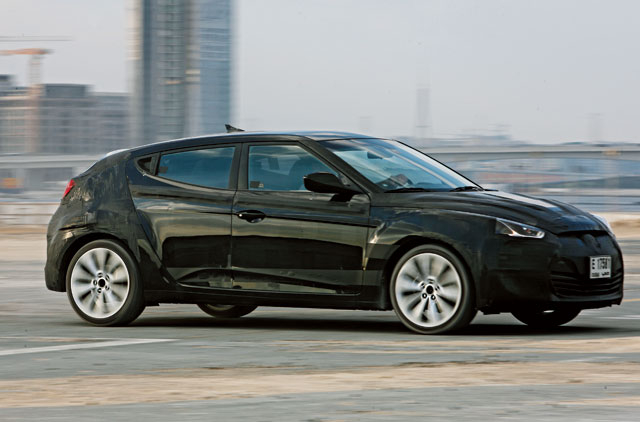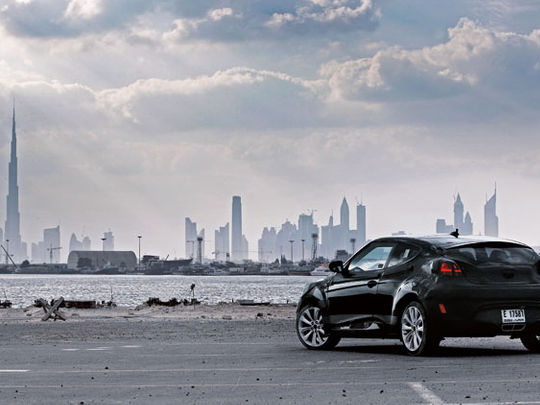
During a year that took more than 20 million recall casualties from the biggest names of the industry, Hyundai quietly fixed minor faults on barely 150,000 vehicles in 2010. Pocket change when you consider the Korean giant's 2009 sales of over 3.1 million vehicles.
J.D. Power and Associates ranks Hyundai in the top three in the brand loyalty study, an area arguably more valuable in brownie points than reliability standings. Every model is flying off dealership forecourts. In some markets the Tucson is 150 per cent up, with the Genesis being one of the slowest movers with a massive 40 per cent year-on-year increase. Hyundai's even gone drifting and Pikes Peak climbing for crying out loud.
In pictures: New Hyundai Veloster
It seems there's no stopping this Korean juggernaut, but there is one void left to fill: a front-wheel drive youthster (a wheels-coined term which means ‘affordable sporty coupé for the first-time car buyer' — look out for youthster to appear all over the motoring media in 2011).
That's where the Veloster comes in, the three-door coupé just launched at the Detroit show in production form. And lo and behold, wheels has already driven it in Dubai. OK, so ‘our' Veloster looks like it's made mostly of duct tape, but this pre-production, ‘spy shot' Hyundai is pretty much the real thing, complete with three doors (seriously, one door on the driver's side, and two on the passenger side), a new-generation 1.6-litre four-pot and enough standard equipment to shame the competition.
So in this world exclusive of a Middle East exclusive story, we shall be the first to decide whether Hyundai's gutsy bravery (did we mention the fact the Veloster has three doors?) can pay off. Judging by its recent steady and symmetrical climb up the rankings, the Korean firm can't possibly fail. But then again, it's never tackled something as asymmetrical as the Veloster…
Aiming high
Hyundai quite clearly wants the world, and with its coupé Detroit debut it's apparent the carmaker is ready to achieve it with innovation, rather than with sheer power of numbers. The Veloster is cutting edge, but it probably wouldn't be if it didn't wear a slanted ‘H' badge, as it's arguably a bigger display of Hyundai's daring than the tail-happy Genesis Coupé and Centennial limousine. The three-door Veloster needs to appeal to much more varied markets than the somewhat specialised, North-Americanised Genesis and Centennial. It needs to be the smiley face of a global carmaker.
With an appealing design, practical rear seating and entry, Hyundai's Blue Link telematics system, 7in touch screen and a new 1.6-litre direct-injected four-cylinder engine mated to Hyundai's first dual-clutch transmission, it's an impressive way to bring the fight to the Minis, Sciroccos, CR-Zs and Zelas (whatever the plural of that is…)
The rear too, is a hatch design enabling simple cargo space access, plus the back seats easily drop. There's no reason why a young couple wouldn't want to own this, what with its 40mpg claimed fuel economy, oddly better than Honda's hybrid CR-Z economy. In our experience during a day-long drive around Dubai, the rear seats were accommodating enough for two adults, or at least for adult legs. This being a coupé, head room is limited, which is a bit strange given that the Veloster's roof drops into the tailgate quite late, employing a double window split by a spoiler. Which coincidentally spoils rear-view mirror vision. The things manufacturers do for styling…
But it still works inside, as the driver can find the right position with adjustable everything, seated in supportive Veloster-embroidered sports buckets. The dials feature elegant blue back-lighting and the 7in display, although extremely welcoming to fingerprint stains, is highly detailed.
As usual, the first thing I looked for was the TC-off button, which doesn't exist. Whether that's a prototype thing or not, I don't know, but even with the electronic system doing its thing, the Veloster still comes across as a sprightly car. Not fast, mind you — it only makes 138 horsepower at 6,300rpm — but lively enough to invite vigorous steering inputs. Its chassis, set on 17in wheels and tyres, feels happy to receive enthusiastic instructions. The mid-range push is sufficient even on the highway, without necessitating jerky kickdown gear changes. Besides the upcoming double-clutch tranny, another of the Veloster's tricks might also prove to be its weight, which is a very low 1,172kg.
The front suspension provides the necessary grip to make the turn, yet never tucks the car into the turn giving it that lovely FWD compression bite when you attack a bend too hard, just about lifting the inside rear tyre off the ground. The Veloster's MacPherson front and V-torsion beam rear, however, should be easy to tune right, as it's a time-proven design, although a Hyundai first.
But guess what? Most people don't care about handling and performance. Sure, you do, which is why you're reading this magazine, but most consumers just need a car, like they just need a pair of socks and a fridge. So like I insist that my fridge features the freezer bit on the bottom (it's the one you use least so why should that be at eye level?) and my feet only accept 100 per cent cotton otherwise they strike by stink, other people need a car that covers their specific needs.
That's what Hyundai happens to understand best, and that's why the Veloster comes with a stability control that detects grip levels on different sides of the vehicle, and six airbags, and brakes which provide maximum force when a panic stop is detected, and electronic brake-force distribution to automatically adjust the braking force to front and rear axles. Plus you'll be able to have all this when the Veloster goes on sale here. Even if you sit there ticking options boxes until you run out of ink, this coupé should cost less than any of its rivals.
The Veloster's connectivity technology is also something Hyundai reps can't stop talking about. Besides the seven inches of high resolution, owners can customise their display with three interface layouts, and muck around with internet radio or stream music from an iPhone or BlackBerry.
Verdict
The Hyundai Veloster then, even in pre-production form, certainly seems to cover many of the bases — more so when you consider its price point. We'll have to wait a bit longer to have a proper go at Hyundai's first youthster, but everything else points at a bulging bank account in a Korean bank somewhere.
And anyway, as far as pre-production cars go, Hyundai's attention to detail is remarkable. That solid thud when the door closes is there, you can barely slide a business card between the panel gaps, and the interior is better appointed than the similarly priced Kia Cerato Koup.
If Hyundai pays this much attention to abused high-mileage hot-weather testing prototypes, the one from the showroom surely can't be a disappointment, can it? Well, looking at Korea's recent climb to power, you'd be a dimwit to bet against the Veloster.
Specs
Model Veloster pre-production
Engine 1.6-litre four-cylinder
Transmission Five-speed auto, FWD
Max power 138bhp @ 6,300rpm
Max torque 167Nm @ 4,850rpm
Top speed NA
0-100kph NA
Price NA
Plus Value for money, quirky styling and practicality
Minus Not very quick, in this pre-production form


